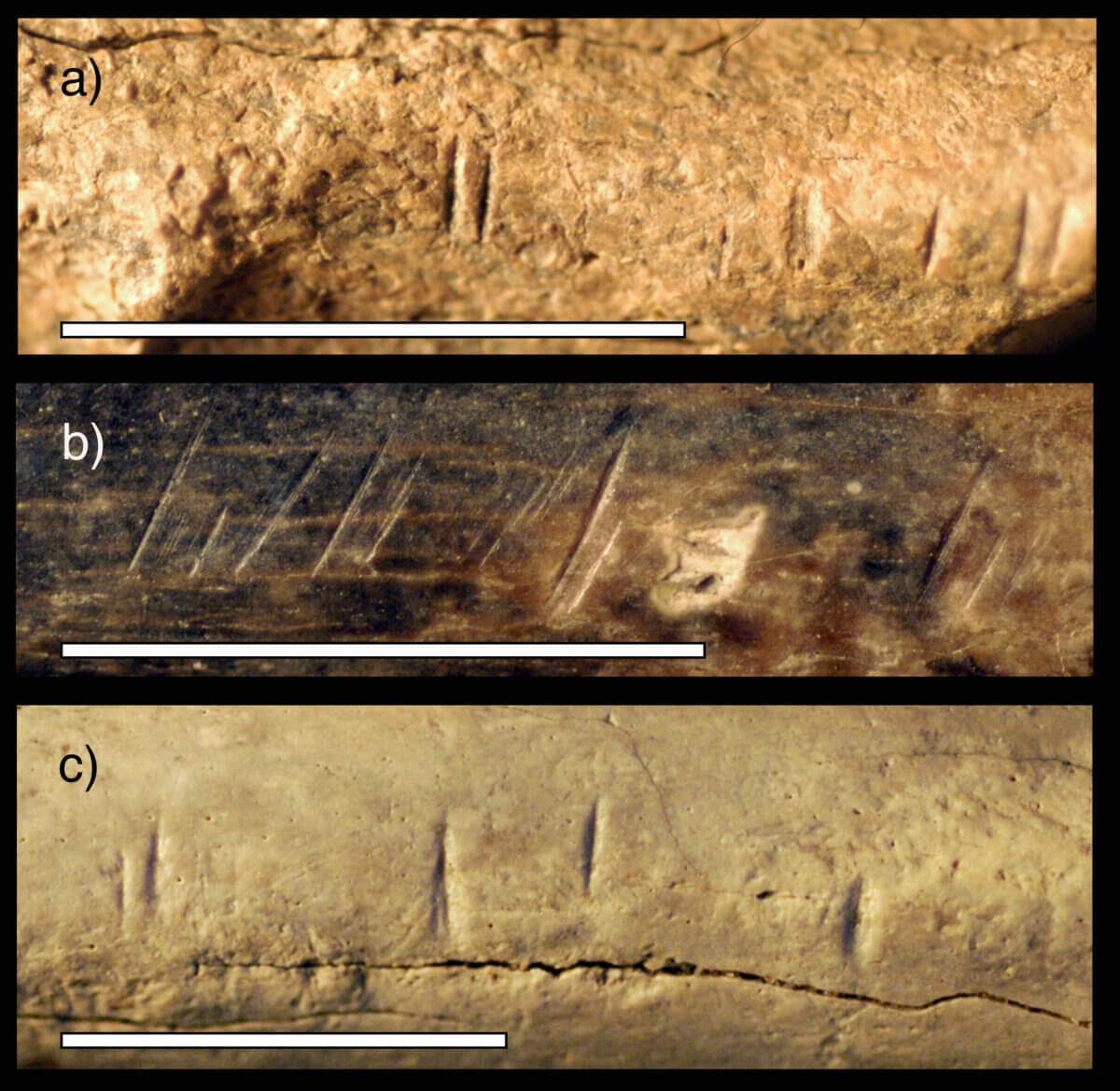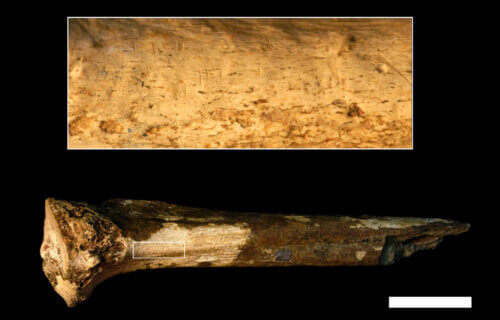
WASHINGTON — According to a study of ancient bones from 1.45 million years ago, the ancestors of modern humans practiced cannibalism, carving up and dining on each other. Scientists found cut marks on a fossilized leg bone of a Homo sapiens’ relative, potentially revealing signs of cannibalism. These marks, created by stone tools, represent the oldest evidence of human ancestors “butchering and likely eating one another.”
The researchers discovered nine cut marks on the left shin bone unearthed in Kenya. The analysis of 3D models from the fossil’s surface indicated that the cut marks were strikingly similar to the damage caused by stone tools and weapons.
“The information we have tells us that hominins were likely eating other hominins at least 1.45 million years ago,” says paleoanthropologist Dr. Briana Pobiner, who works at the National Museum of Natural History, in a media release.
Although cannibalistic tendencies have been observed in various species from the human evolutionary tree, this finding suggests that such behavior was present earlier than previously recognized. Scientists first encountered the fossilized tibia in a Nairobi museum while studying potential prehistoric predators of man’s ancient relatives. Noticing what appeared to be signs of butchery on the bone, she created molds of the cuts, using material similar to what dentists use for impressions of teeth.

To verify her suspicion, Dr. Pobiner sent the molds to co-author Professor Michael Pante at Colorado State University. After analyzing the marks on the molds and comparing them to a database of 898 individual tooth, butchery, and trample marks created through controlled experiments, Prof. Pante identified nine out of the 11 marks as clear matches to damage inflicted by stone tools. The remaining two marks likely originated from a large cat, possibly a lion.
While the cut marks suggest butchery, they do not conclusively prove cannibalism, as the predator and prey would need to be from the same species for this classification. Despite this, Dr. Pobiner believes it is most likely that the leg was consumed for nutritional purposes rather than for a ritual, as the cut marks are situated where a calf muscle would have attached to the bone, a logical place to cut for meat removal.
While it is unclear whether the specimen belongs to the Homo erectus species or Australopithecus boisei, Dr. Pobiner shares that the evidence might indicate prehistoric cannibalism or one species consuming its evolutionary cousin. However, further research and scrutiny of the findings are necessary for a definitive conclusion.
A South African skull first discovered in 1976 sparked debate about the earliest known case of human relatives butchering each other. Researchers believe reexamining the skull would determine if their discovery is the oldest cut-marked hominin fossil.
“You can make some pretty amazing discoveries by going back into museum collections and taking a second look at fossils. Not everyone sees everything the first time around. It takes a community of scientists coming in with different questions and techniques to keep expanding our knowledge of the world,” Dr. Pobiner concludes.
This study is published in the journal Scientific Reports.
South West News Service writer Stephen Beech contributed to this report.


Why were they being canibals? It seems a bit extreme to kill and eat another humanoid, if there’s any other game to be had, there, doesnt it? So, why?